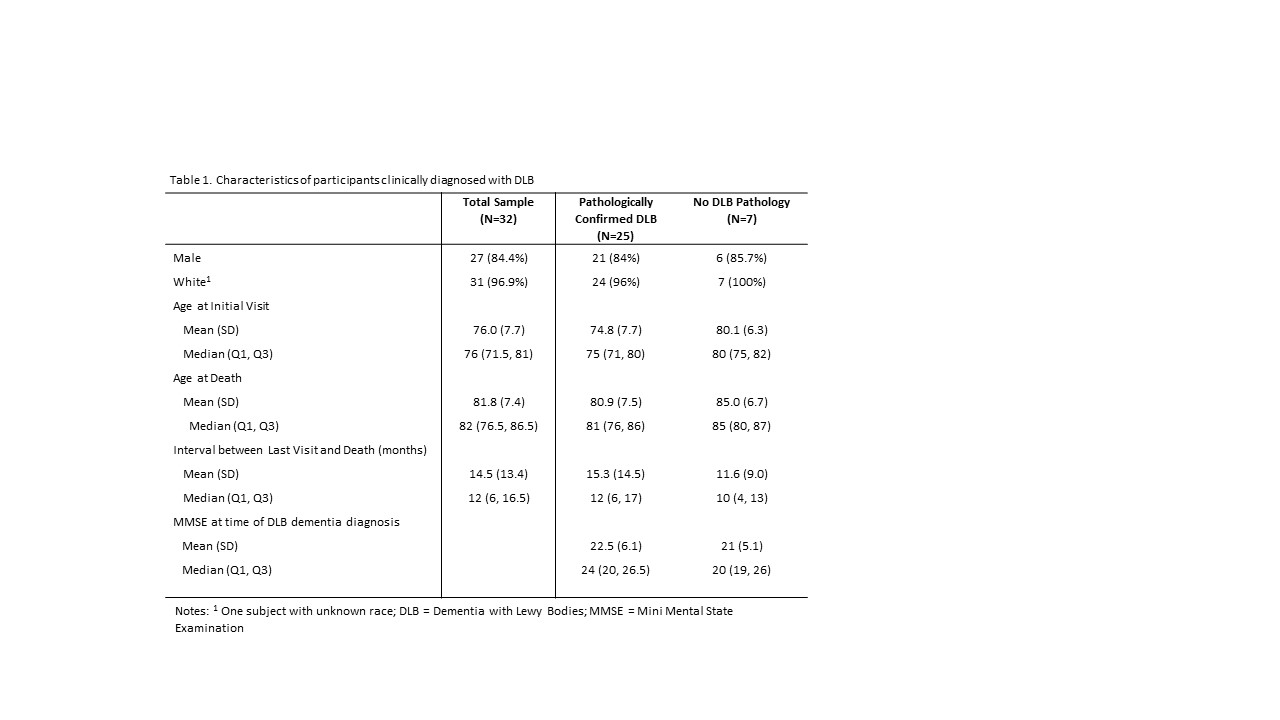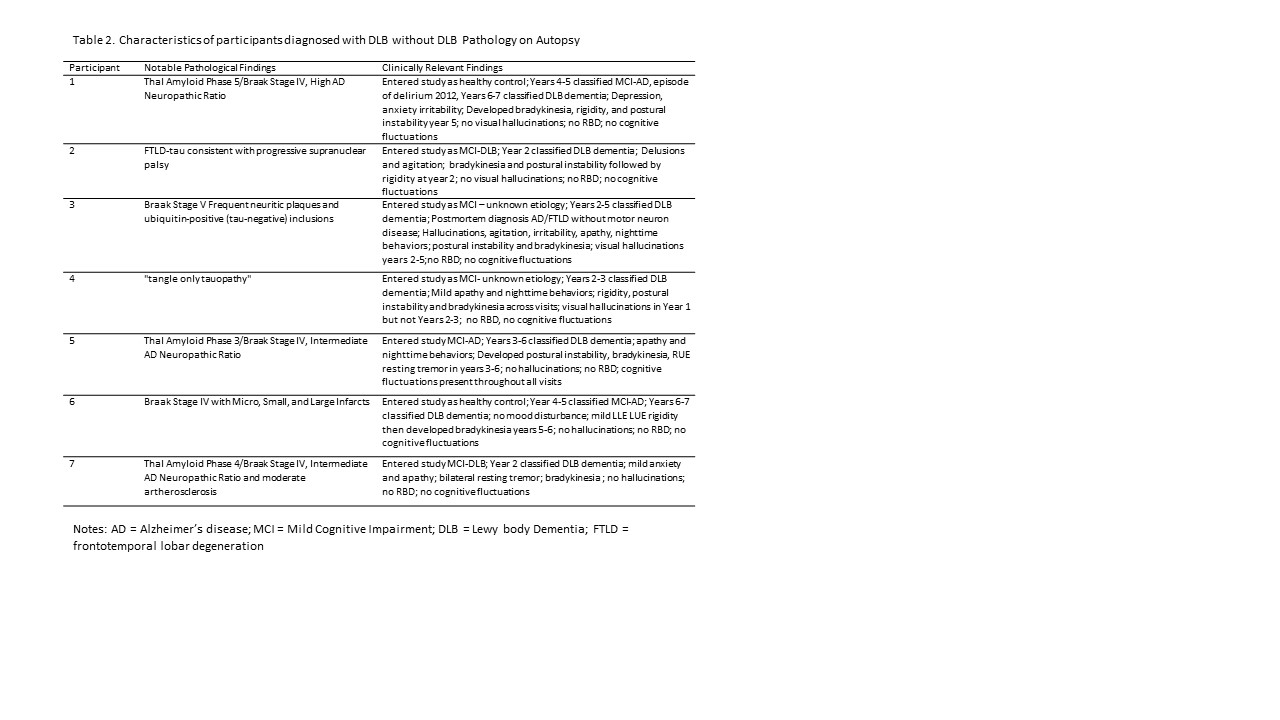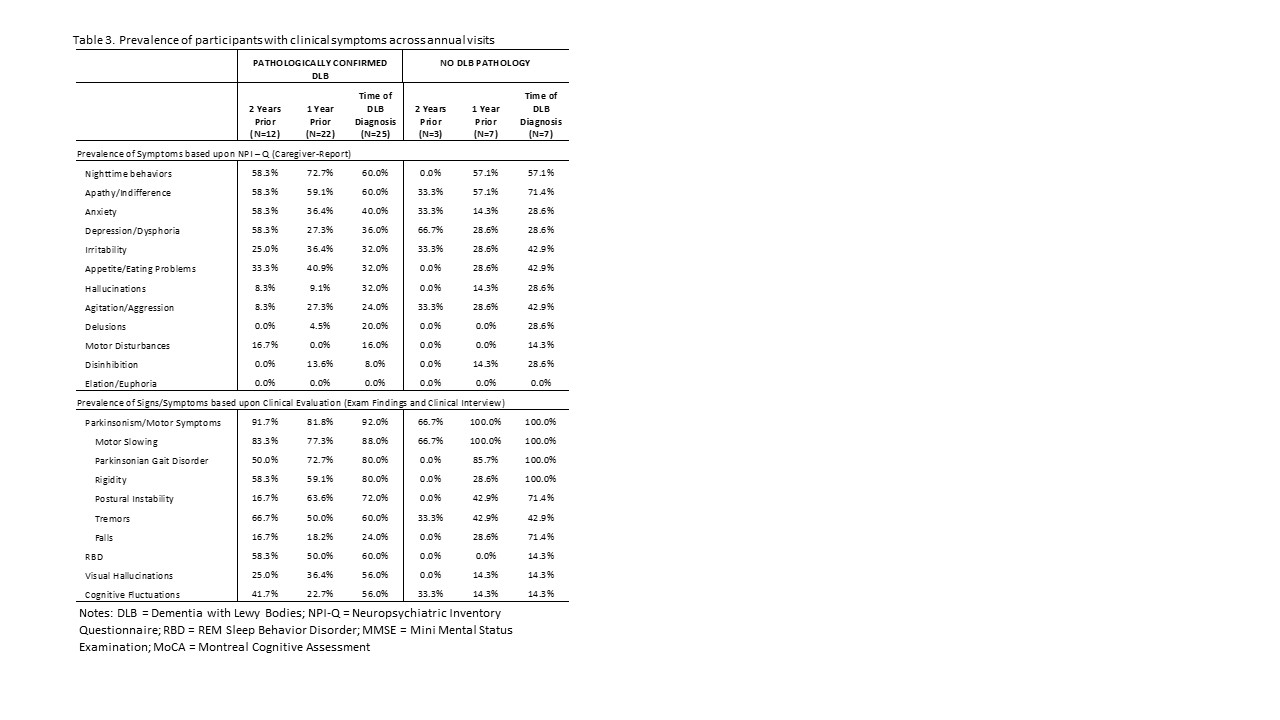Session Information
Date: Wednesday, September 25, 2019
Session Title: Cognition and Cognitive Disorders
Session Time: 1:15pm-2:45pm
Location: Agora 3 East, Level 3
Objective: Compare prodromal neuropsychiatric, sleep, and motor symptoms in patients clinically diagnosed with dementia with Lewy bodies (DLB) with and without Lewy body pathology on autopsy.
Background: Characterization of prodromal symptoms of DLB may inform new clinical guidelines for early disease detection and improve diagnostic accuracy.
Method: We analyzed postmortem neuropathological data from the National Alzheimer’s Coordinating Center (NACC) database for 32 participants who entered the study without dementia and subsequently received a diagnosis of DLB. We examined data from the Neuropsychiatric Inventory Questionnaire and a structured clinical interview assessing the core features of DLB for visits up to 2 years prior to DLB diagnosis. Parkinsonian symptoms were assessed through structured clinical interview and clinical exam. Two-sample t-tests were used to compare age at study entry and death. We compared prevalence of symptoms one year prior to DLB between those with and without Lewy body pathology using Fisher’s exact tests.
Results: Demographic information is provided in Table 1 [table 1]. Twenty-five participants (78.1%) with a clinical diagnosis of DLB had Lewy body pathology. The pathology of the group without Lewy bodies (n=7) was mixed and are characterized in Table 2 [table 2]. There was no significant difference between groups in terms of age at enrollment in the study (p=0.10) or age of death (p=0.20). Regarding neuropsychiatric, sleep, and motor symptoms in the prodromal phase, a larger proportion of the individuals with pathologically-confirmed DLB had RBD compared to the non-DLB pathology group (50% vs. 0%, respectively; p=0.03; Table 3). One year prior to dementia diagnosis, visual hallucinations (36% vs. 14%) and cognitive fluctuations (23% vs. 14%) were greater in the pathologically-confirmed group, but the difference was not statistically significant. [table 3].
Conclusion: Visual hallucinations, cognitive fluctuations, and RBD in prodromal disease states are found in pathologically-confirmed DLB, supporting the most recent diagnostic criteria [1]. The prevalence of other neuropsychiatric symptoms appeared similar between groups. Atypical presentations of neurodegenerative disease with parkinsonian features may be misdiagnosed as DLB. Future research should examine larger sample sizes to confirm these findings. NACC database is funded by NIA/NIH Grant U01 AG016976.
References: 1. IG McKeith, BF Boeve, DW Dickson, Diagnosis and management of dementia with Lewy bodies: Fourth consensus report of the DLB Consortium. Neurol 2017;89:88-100.
To cite this abstract in AMA style:
K. Wyman-Chick, D. Weintraub, M. Rosenbloom, L. Erickson, P. Martin, T. Barclay, M. Barrett. Prodromal symptoms in clinically diagnosed dementia with Lewy bodies stratified by Lewy body pathology on autopsy [abstract]. Mov Disord. 2019; 34 (suppl 2). https://www.mdsabstracts.org/abstract/prodromal-symptoms-in-clinically-diagnosed-dementia-with-lewy-bodies-stratified-by-lewy-body-pathology-on-autopsy/. Accessed December 11, 2025.« Back to 2019 International Congress
MDS Abstracts - https://www.mdsabstracts.org/abstract/prodromal-symptoms-in-clinically-diagnosed-dementia-with-lewy-bodies-stratified-by-lewy-body-pathology-on-autopsy/



